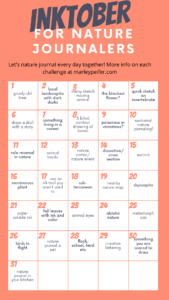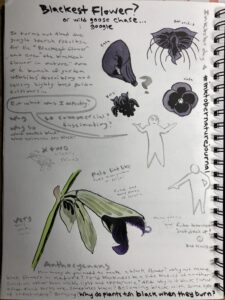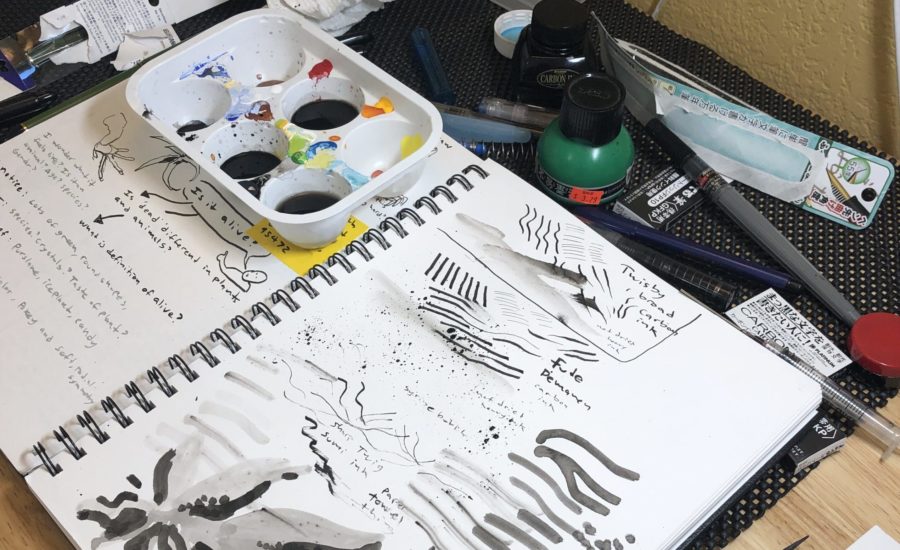It is about time for an Inktober for Nature Journals! This is your opportunity to commit to nature journaling everyday for 31 days! Each day has a prompt that you can see below. Feel free to share. On this page I will post more details about each prompt as the month progresses. Use the hashtag #inktobernaturejournal when you post your pages. Follow my instagram to see my posts because I am doing the challenge too!

Inktober for Nature Journal Prompts
Day 1: Gnarly Old Tree.
Charismatic old trees are ideal subjects for ink drawing. Firstly, find one near you or use a photo. There are often good trees to draw even in urban areas, street trees, and parks. This is a good time to test out some new ink tools that you are planning on using this month. Check out this post for a video about inking old trees.

Day 2: Local landscapito with dark darks.
It is easy to have your nature journal pages come out pale. Especially if you use watercolor for landscape paintings. Today, we are going to practice landscapitos (small landscapes) using ink. You can make several thumbnails if you want. Focus on seeing the dark darks. Can you simplify what you see to a few value gradations? This practice will help you later with your landscape paintings. Look how Bill Waterson used dark ink areas to depict this landscape.

Still struggling putting dark ink on your landscapito? Check out how print maker Tom Killion uses black ink in these landscapes below.


Day 3: Messy Sketch Moving Animal.
Sometimes we are too hard on ourselves. Especially with moving animals. Most animals we see in nature are going to be moving. However, it is really good practice to try drawing them. Have you ever seen Leonardo Da Vinci’s horse drawings? He has scribbles all over the page. That is what we will try to do today. There is no going back when you use ink

Day 4: The Blackest Flower?
This one gives you some opportunity to do a little research or look in a garden near you. What is the darkest flower that you can find? Are there any truly black flowers? Maybe do some research online or at the library. It is possible to apply nature journaling techniques to these secondary sources. How will you draw a black flower with ink?

Day 5: Quick Sketch an Invertebrate.
Invertebrates are animals too. However, we often don’t give them as much credit as birds and mammals. Now is your chance to find one and do some quick sketches of it with ink in your nature journal. Invertebrates include anything without a backbone. That means lobsters, butterflies, spiders, earthworms, and coral all count.
Day 6: Draw a Skull With a Story.
Everything in nature has a story. Moreover, the story is the most interesting part for humans. How can you be more intentional about capturing and telling the story on your nature journal pages? Getting better at this can make your pages more fascinating to other people or your future self when you look pack on them. For today’s prompt apply this idea to a skull. If you do not have access to any or can’t find any look for one in a book or do a search online. Make sure you can get some info about it.
Day 7: Something Living in a Corner.
Can you find something living in a corner? What nature journaling techniques can you apply to it? How many questions can you ask about it? And finally, what ink tools will you use?

The second week of inktober is coming soon in another post…
Just getting started with nature journaling?
Need more tips? If so, check out this post. It will walk you through how to nature journal in 10 steps.
Need help choosing nature journaling supplies? Check out Nature Journaling Supplies: What You Need and What You Do Not

